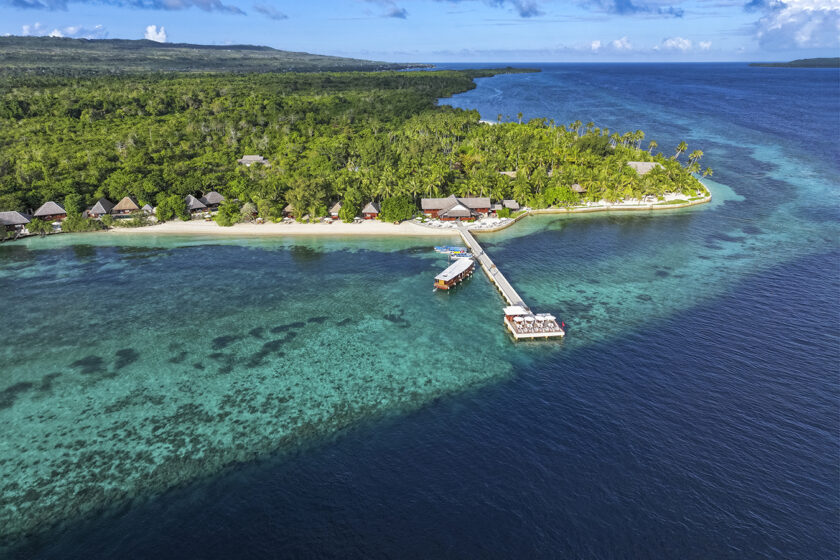Off the tip of Southeastern Sulawesi, Indonesia in the Banda Sea, Wakatobi Dive Resort offers an unforgettable Blend of Pristine, Protected Reefs with Sustainable Luxury.
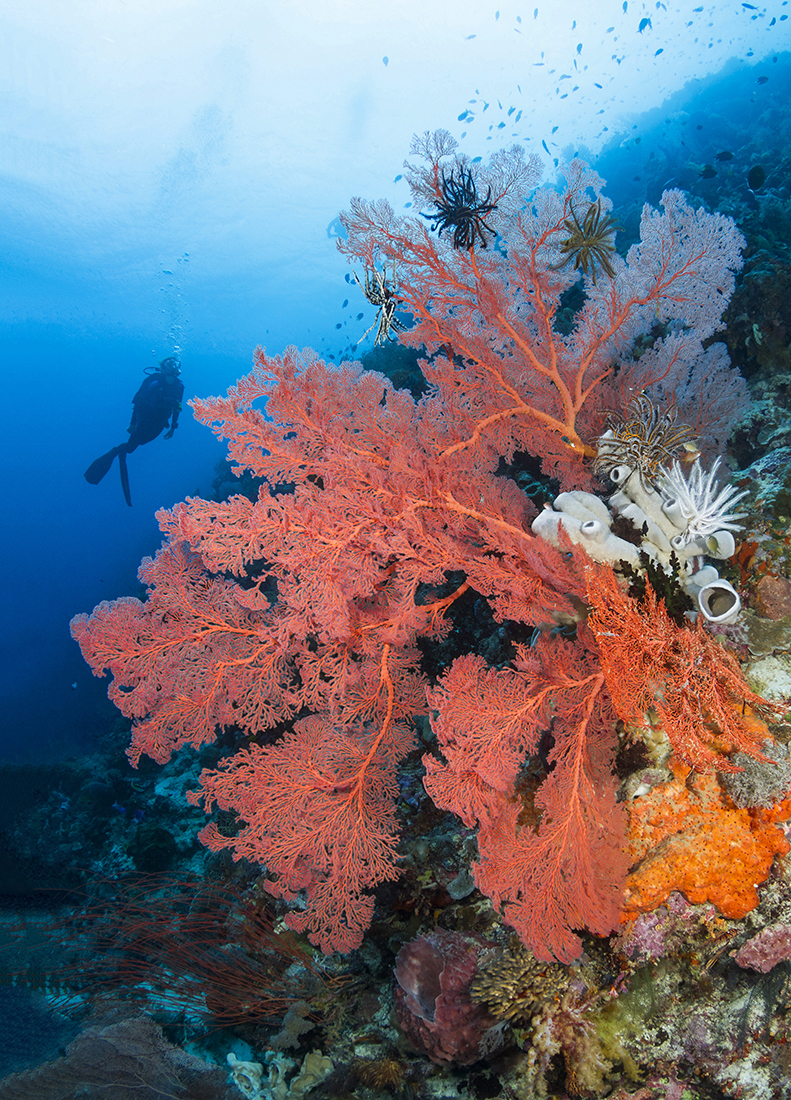
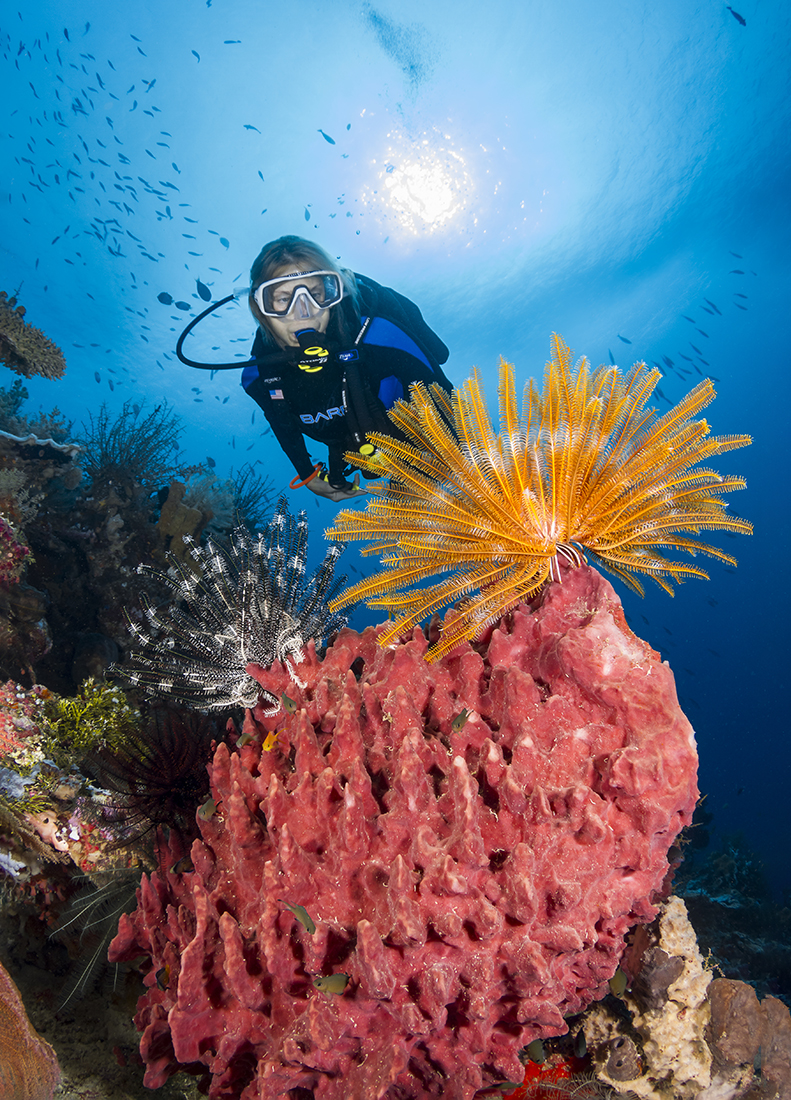
Imagine yourself immersed in warm, clear waters that reveal pristine, undamaged reefs teeming with an abundance of marine life. Next, picture uncrowded dive sites that are just a stone’s throw from a picturesque beachside resort offering luxurious accommodations, delicious meals, and welcoming hospitality. Of all the places that I might consider when envisioning this ideal destination, one name comes to mind: Wakatobi.
Wakatobi is one of the Indonesian “dream destinations” mentioned alongside the likes of Alor, Bunaken, Komodo, Lembeh and Raja Ampat. But what exactly is Wakatobi? When I first heard the name and its omnipresent tagline “an experience without equal” years ago, I didn’t have a clear idea of exactly what Wakatobi is or what it’s about.
What’s in a Name
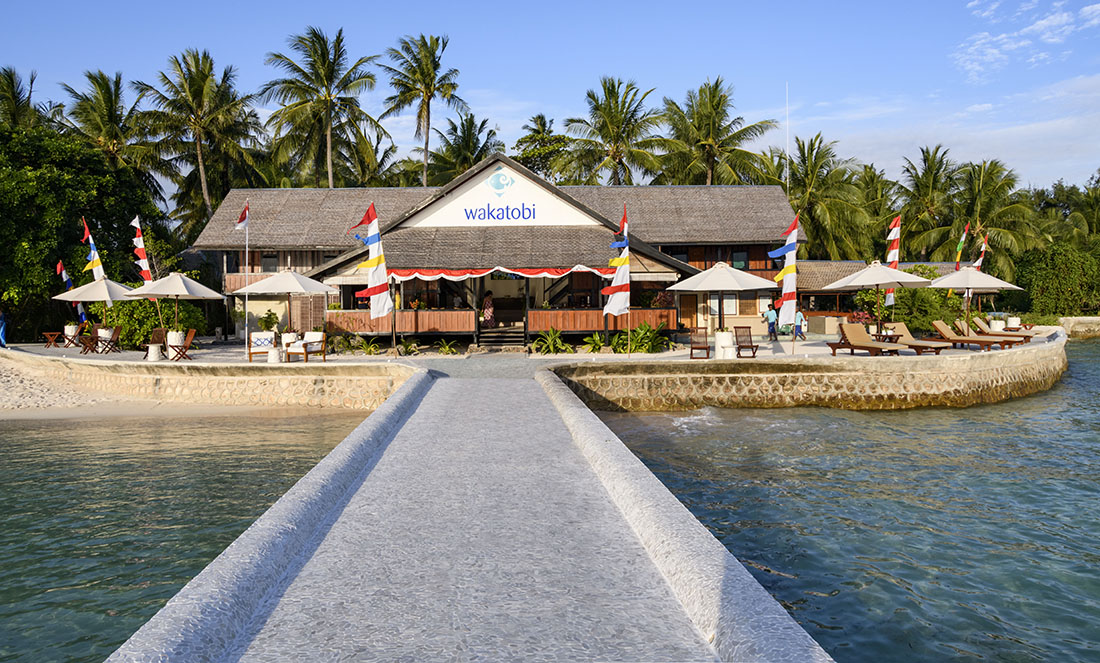
For starters, Wakatobi is an acronym derived from combining the first two letters of the four primary islands of the Tukang Besi Archipelago. This group of islands is located in the Banda Sea off the southeastern corner of Sulawesi, Indonesia. Starting at the top of the island chain is Wangi-Wangi providing the Wa, followed by Kaledupa (Ka), then Tomia (To) with the island of Binongko (Bi) bringing up the end. Not only did this clever name stick for a newly established dive resort when it was established in 1996, it also led to the region renaming itself the Wakatobi Regency in 2003.
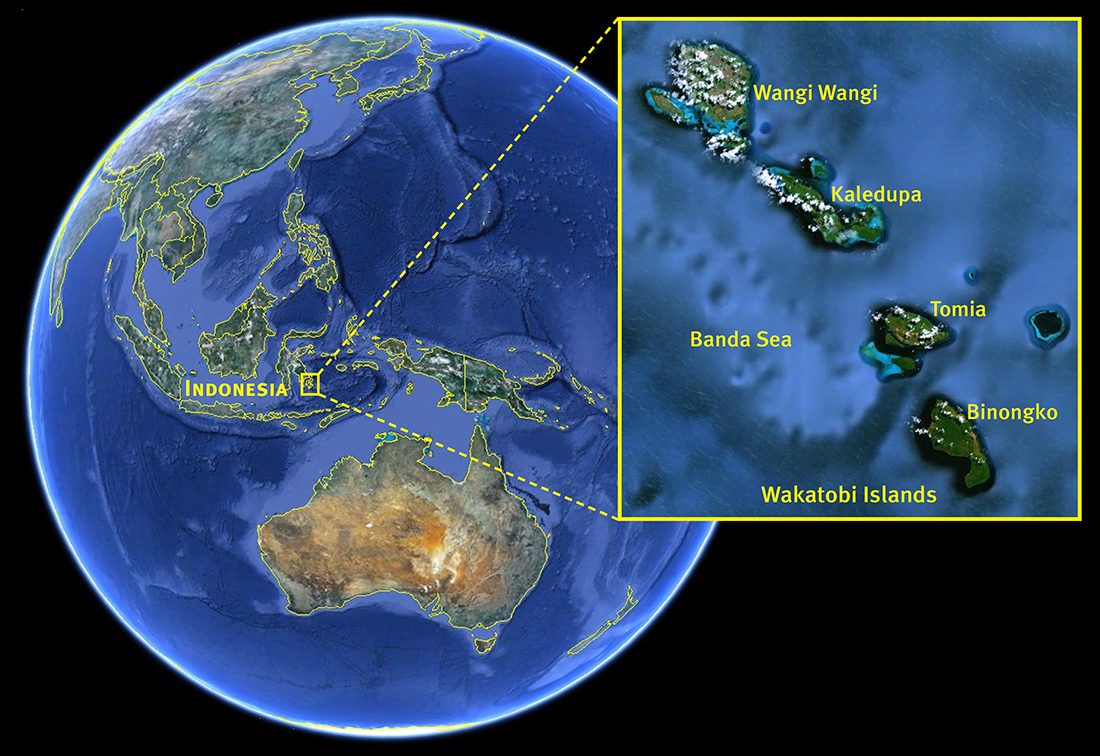
My first visit to Wakatobi came in 2013, and it was a highly anticipated trip. For a number of years prior, I had conversations with divers who had visited the resort— including many people who visited more than once. The consensus was that it was one of the most idyllic dive resort settings they have ever had the pleasure of visiting.
Having now visited Wakatobi five times in the past decade, I have my own thoughts as to what makes it unique. To summarize, it could easily be classified as a destination, a resort (and by the way, they also have a liveaboard) as well as “an experience”’ all at the same time.
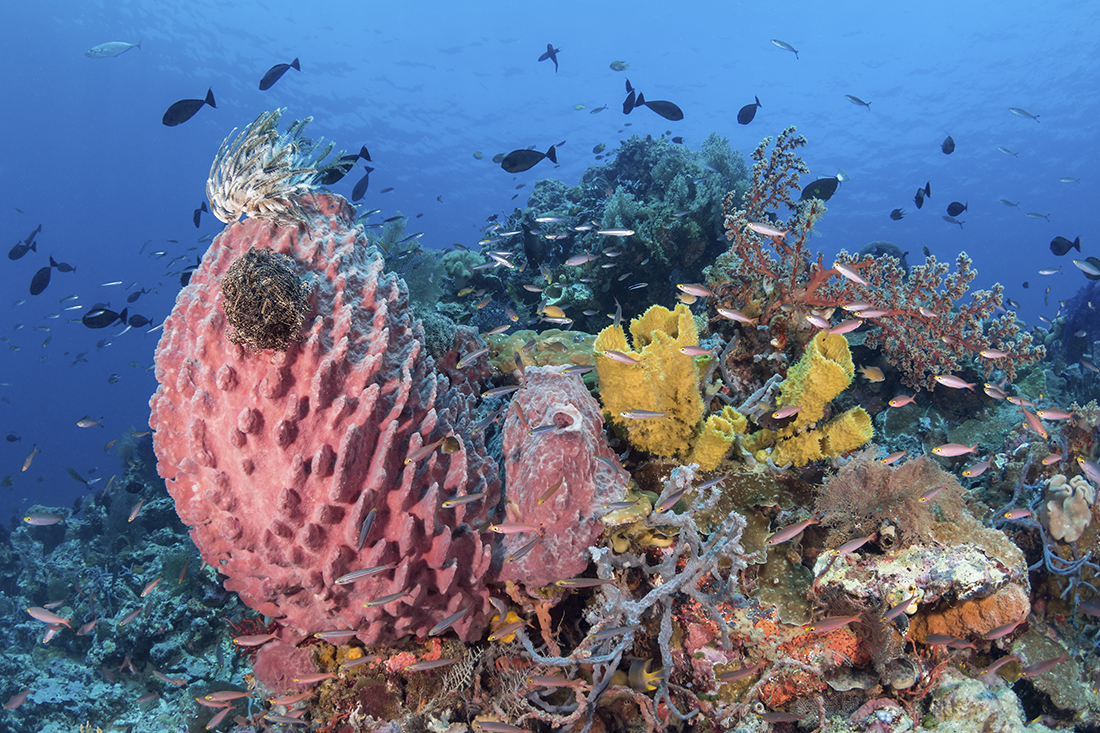
In terms of a destination, the Wakatobi Regency is home to the Wakatobi National Park. At more than 5400 square miles in size, the park is the third largest marine protected area in Indonesia. It was designated as a UNESCO Biosphere Reserve in 2012, and a “High Biodiversity Area in Coral Triangle Region” by the Coral Triangle Initiative on Coral Reefs, Fisheries, and Food Security. The catalyst to the park’s creation can be traced right back Wakatobi Dive Resort’s own Collaborative Reef Conservation Program, which was founded in 1997 and now manages and maintains one of the world’s largest privately funded marine protected areas.
The experience is further enhanced by the fact that Wakatobi Dive Resort is far off the beaten track, so you can be assured you will not see a dive boat from another resort for 100 miles.
Welcome to Wakatobi. Let the Experience Begin.
Upon arrival at Bali’s Denpasar International Airport’s terminal, you’ll be met by a Wakatobi representative who will facilitate all details of arrival, luggage handling and transfer to a hotel for an overnight stay. After resting and refreshing overnight, you’ll return to the airport to relax with a complimentary breakfast while Wakatobi’s concierge team readies the private guest flight to the resort’s own airstrip.
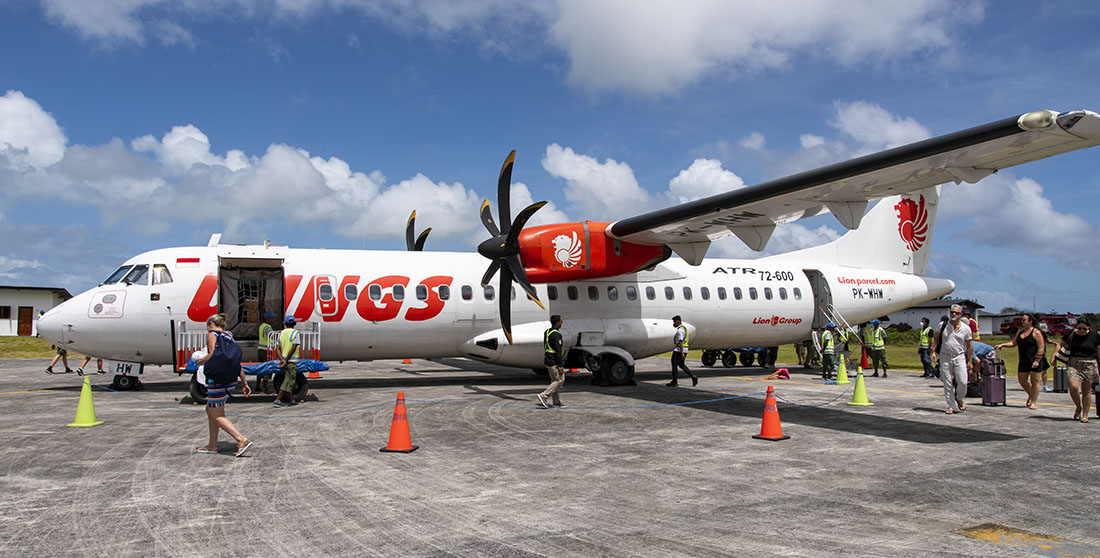
The only passengers you will see on the direct flight are guests of the resort or Wakatobi’s liveaboard yacht, Pelagian. Unlike commuter flights with tight baggage restrictions, every piece of luggage that arrives with you in Bali – dive gear, photo equipment, etc. – will be delivered to your room upon arrival to the resort. On arrival at Tomia, guests undertake a short boat ride via one of Wakatobi’s capacious size dive boats (more about them later) on over to the resort.
While the underwater experience is always first of mind when choosing a dive vacation, comfort ashore and good meals are also important considerations for most of us. Wakatobi offers a broad range of accommodations from two-bedroom villas with an ocean-view pool to Indonesia-style beachfront bungalows with Asian outdoor showers. The most recent additions are the resort’s Turtle Beach Bungalows (four in all) which sit on a more private stretch of beach and feature enlarged living spaces.
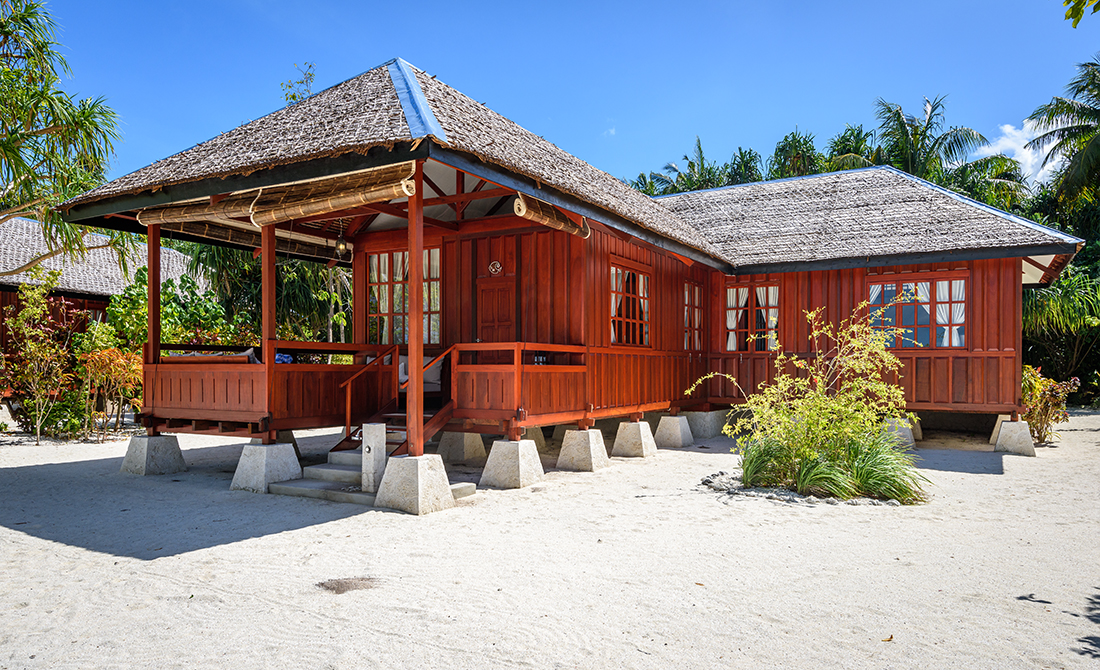
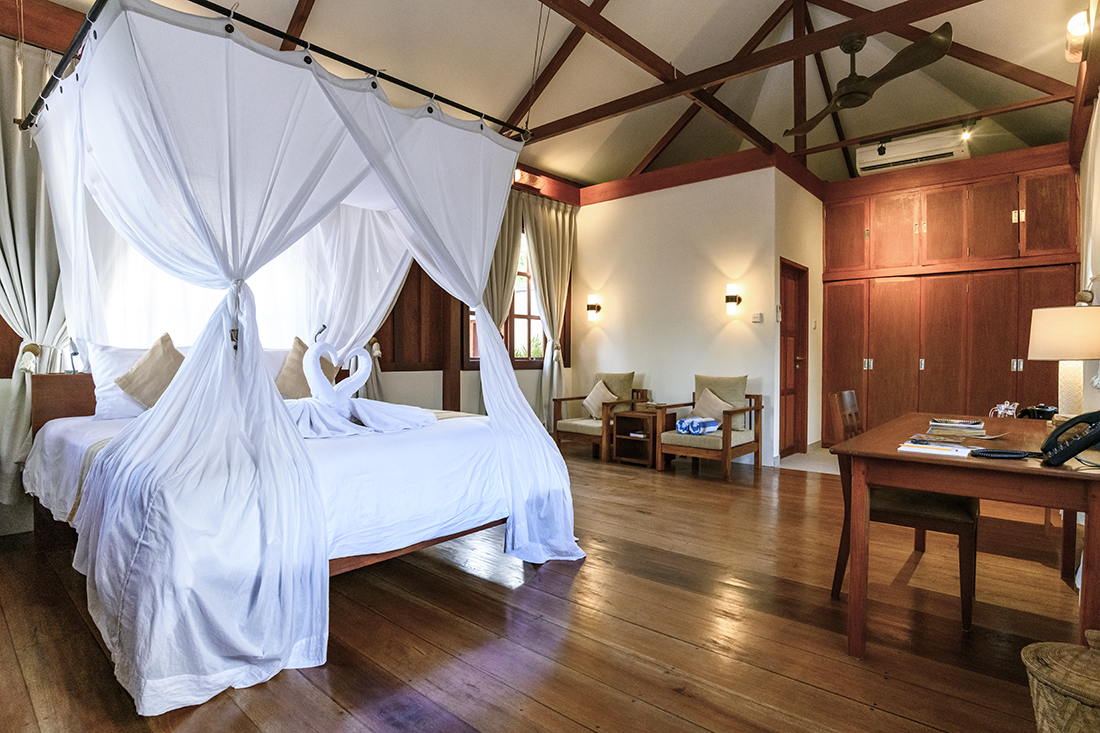
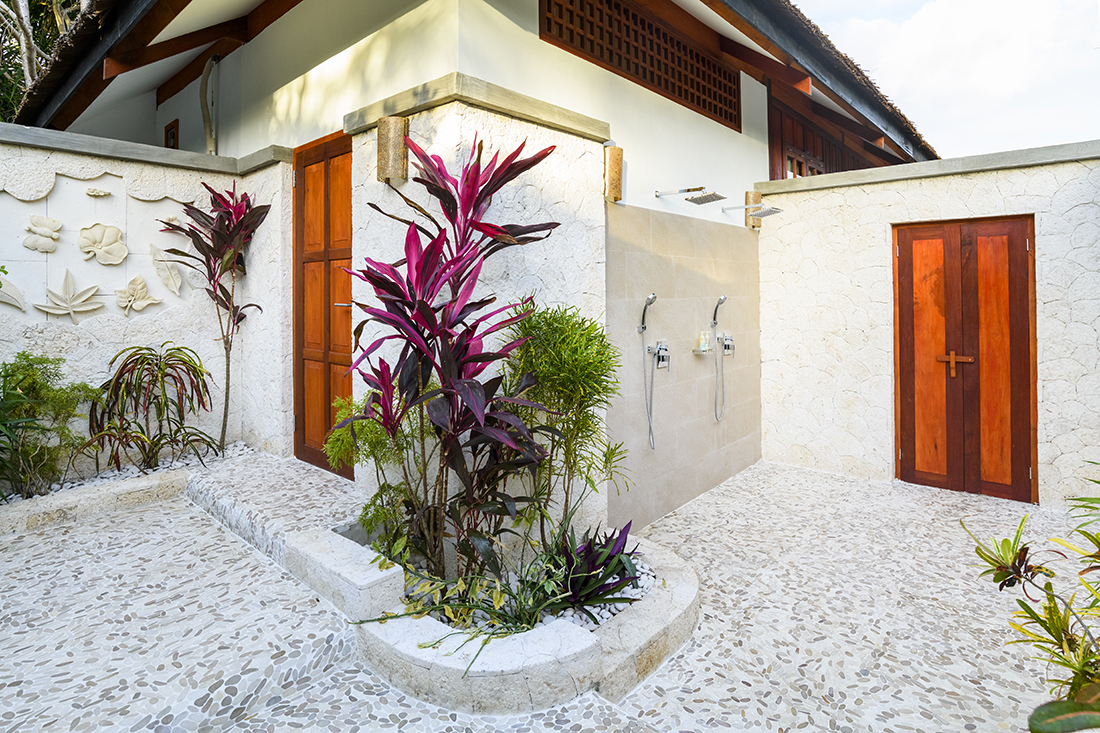
Taking the easy way out rather than unpacking what each offer, I recommend visiting the Wakatobi website’s Accommodation page or their blog Wakatobi Flow for more details. That said, I will add that all choices are very nice.
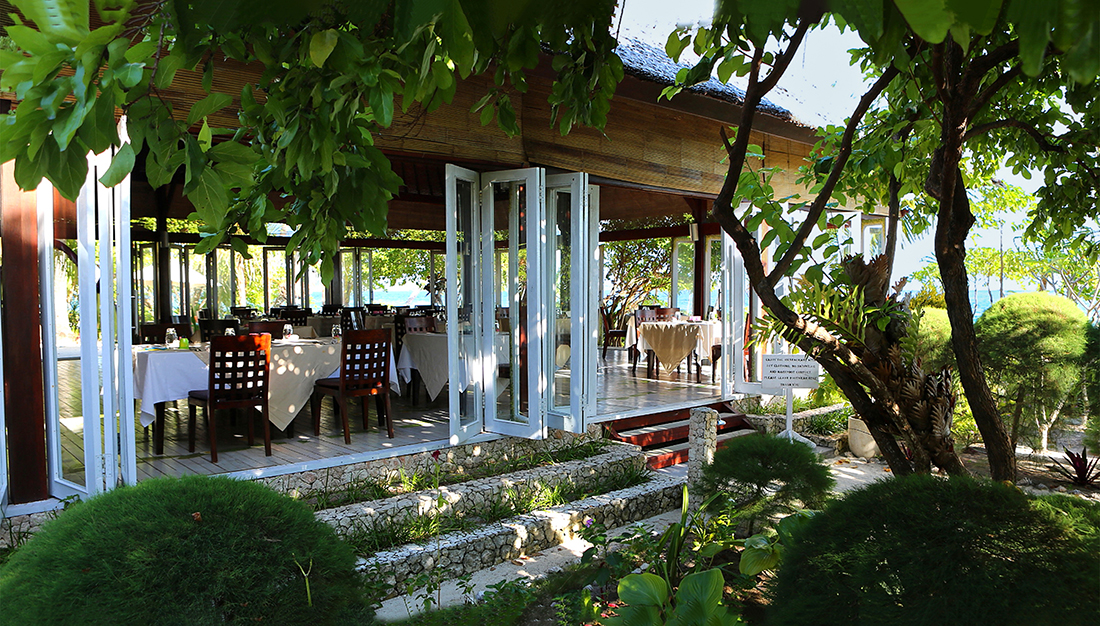
As for the meals… while I am by no means a self-described foodie, I can attest that Wakatobi’s restaurant services are at the top of the chart. The dining experience begins with a large, continuous blend of international and Indonesian cuisine prepared by trained, certified chefs in one the most well-equipped restaurant-grade kitchens I have ever seen in such a remote location. Furthermore, they’ll cater to any dietary requests or requirements. Believe me, they want you to be happy.
And the desserts, well… let me put it this way: your wetsuit won’t get any looser during the trip.
Eat, Sleep & Dive
As delicious as the mealtime spread might be, the ocean view from your table is a mighty big distraction. The feature that always catches my attention is the sharp boundary line between a broad expanse of shallows with a montage of seagrass beds and coral formations, and the deep blue where the edge of the reef drops off into the void.
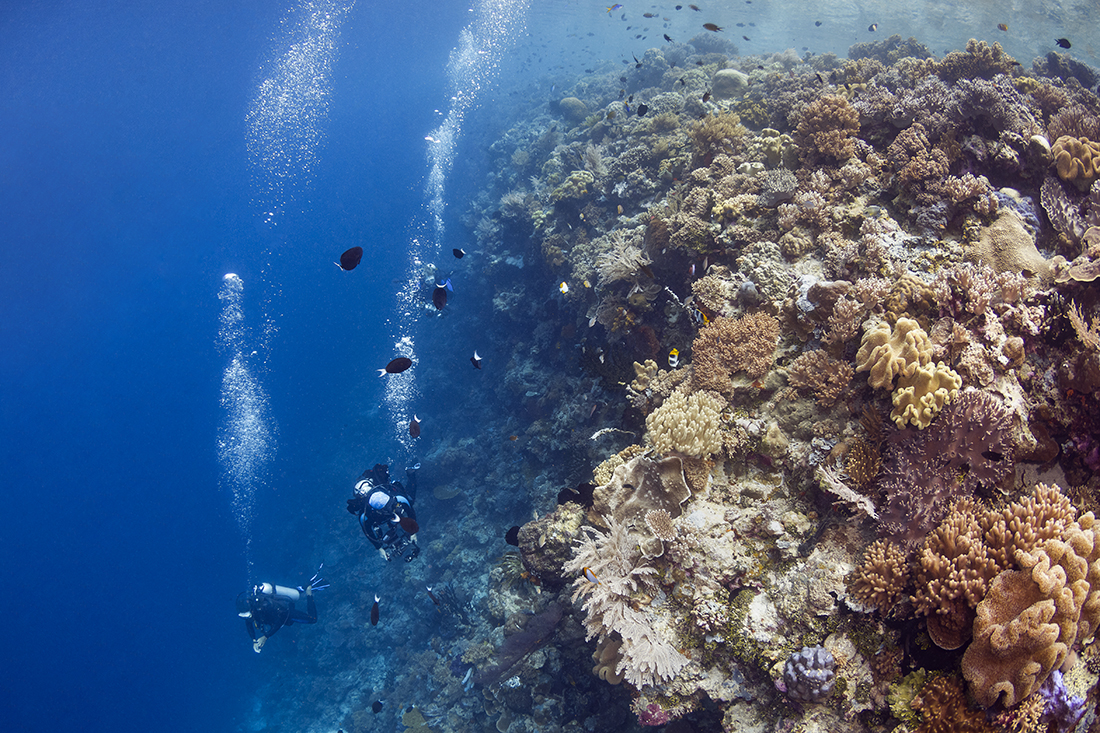
At the majority of dive sites within Wakatobi’s private marine preserve, reef formations start within a few feet of the surface and drop into the depths rapidly along steep slopes or walls.
The first example a guest will see of this is the resort’s highly acclaimed House Reef when viewed from the resort’s jetty. Here, the reef’s shelf takes its vertical plunge into the depths some 250 feet/76 meters down. Punctured with numerous overhangs and crevices, the wall is adorned with a thriving array of sponges, hard and soft corals providing shelter for a diverse population of invertebrates and fish. Enhancing the visual nature of the wall itself, water clarity averages in the 90 ft/30-m-plus range, allowing ample ambient light to filter down into the depths.
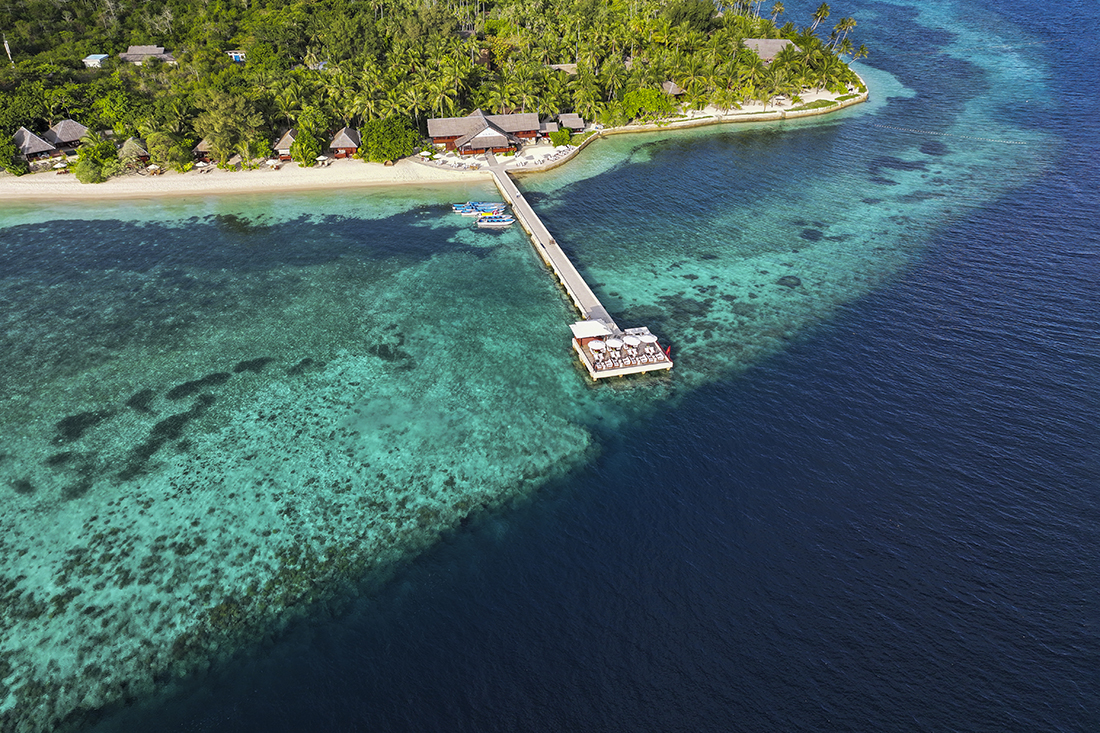
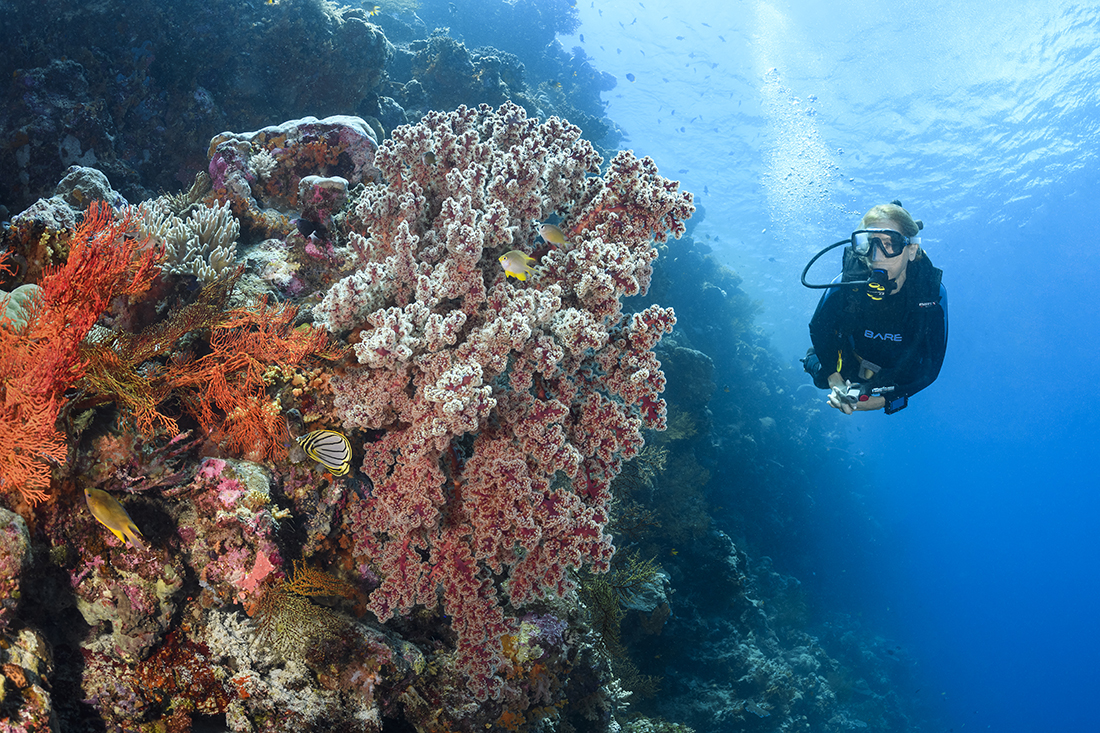
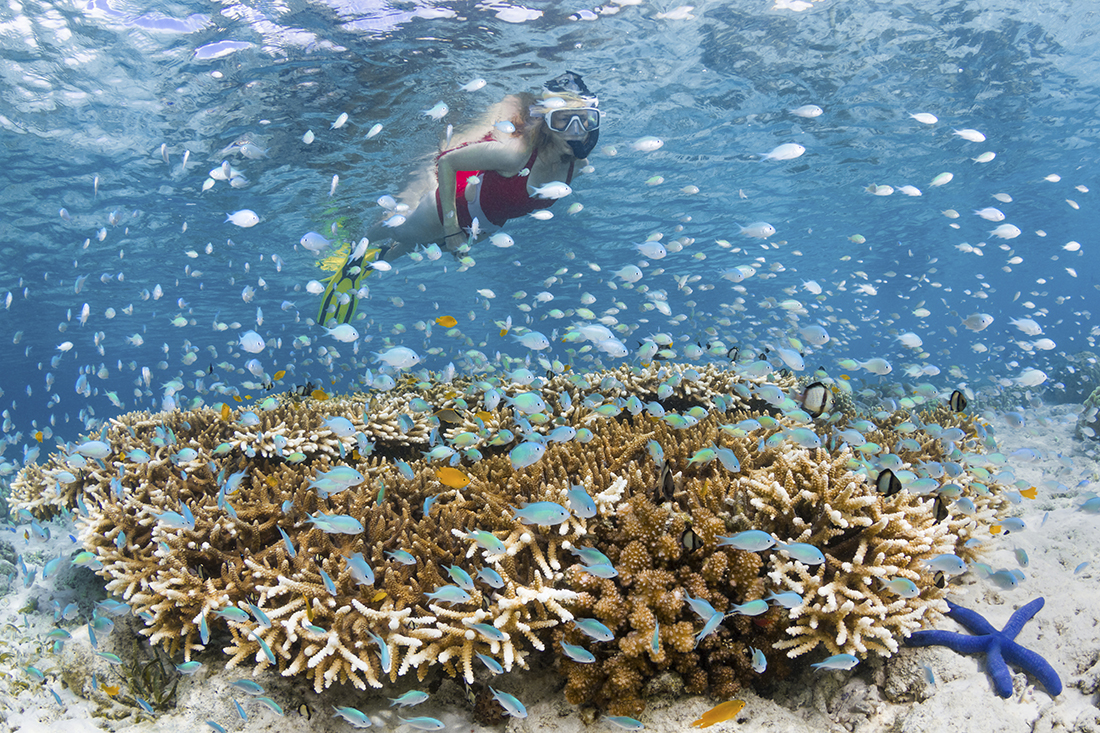
Back on top between the beach and the edge of the drop is a shallow expanse of grass beds, sand flats and patches of soft and hard corals. This area is a cornucopia of marine life that provides snorkelers an abundance of subjects to see without venturing far from shore.
Big Boats, No Crowding
In addition to serving as the gateway to the House Reef, where divers and snorkelers can enter the water by a ladder close to the end of the jetty, the jetty is also the departure point for Wakatobi’s dive boat fleet. And when I say fleet, I mean fleet.
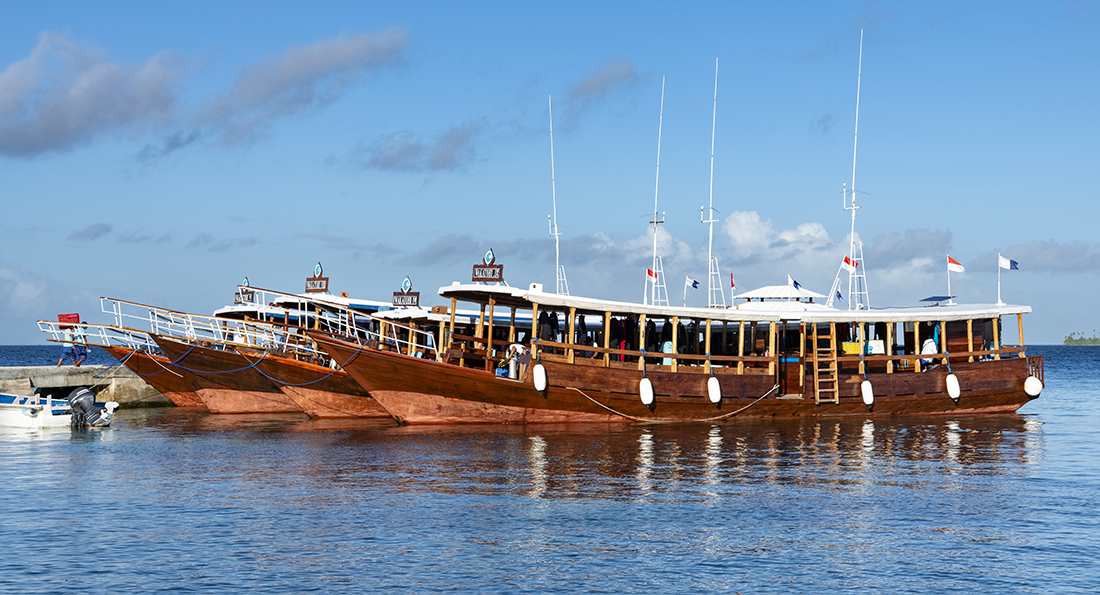
Wakatobi has in operation nine dedicated dive/snorkel boats, each measuring between 63 and 67 feet / 19 – 20 meters in length. In addition to being exceptionally roomy, all boats feature full-length roofs for sun protection and an actual bathroom facility complete with a hot and cold freshwater shower. But just because these boats are huge, doesn’t mean they have to be packed with divers. The maximum number of divers and/or snorkelers is 16 for the larger boats and 12 for the slightly smaller boats.
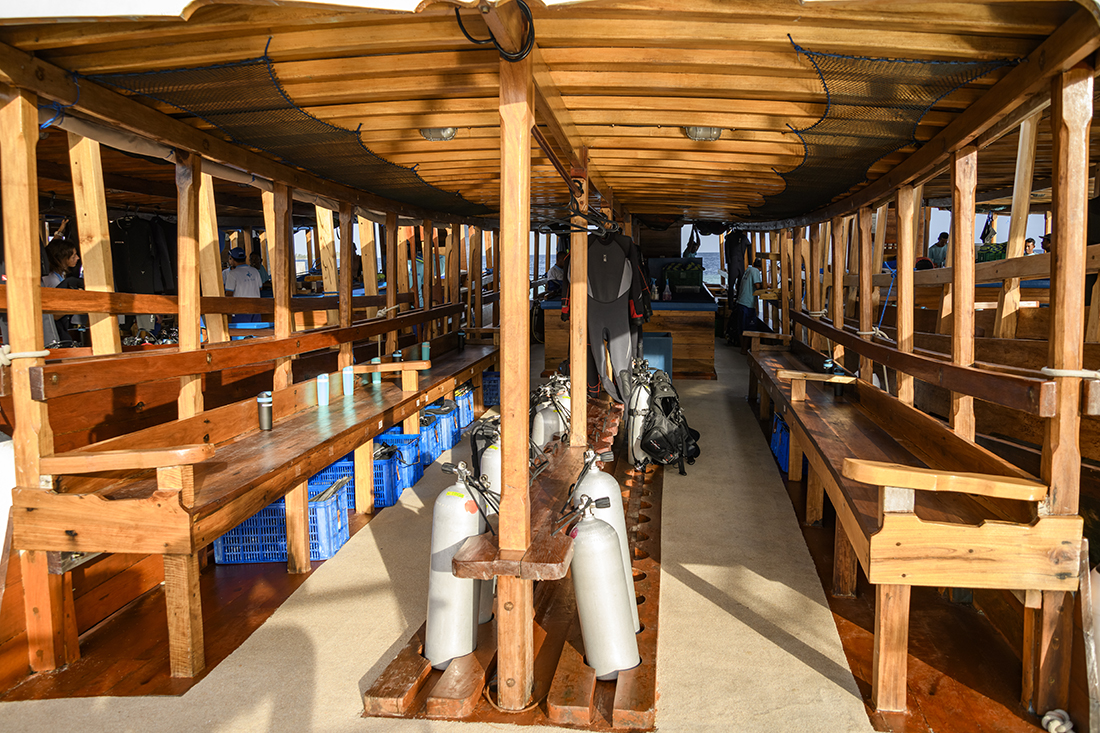
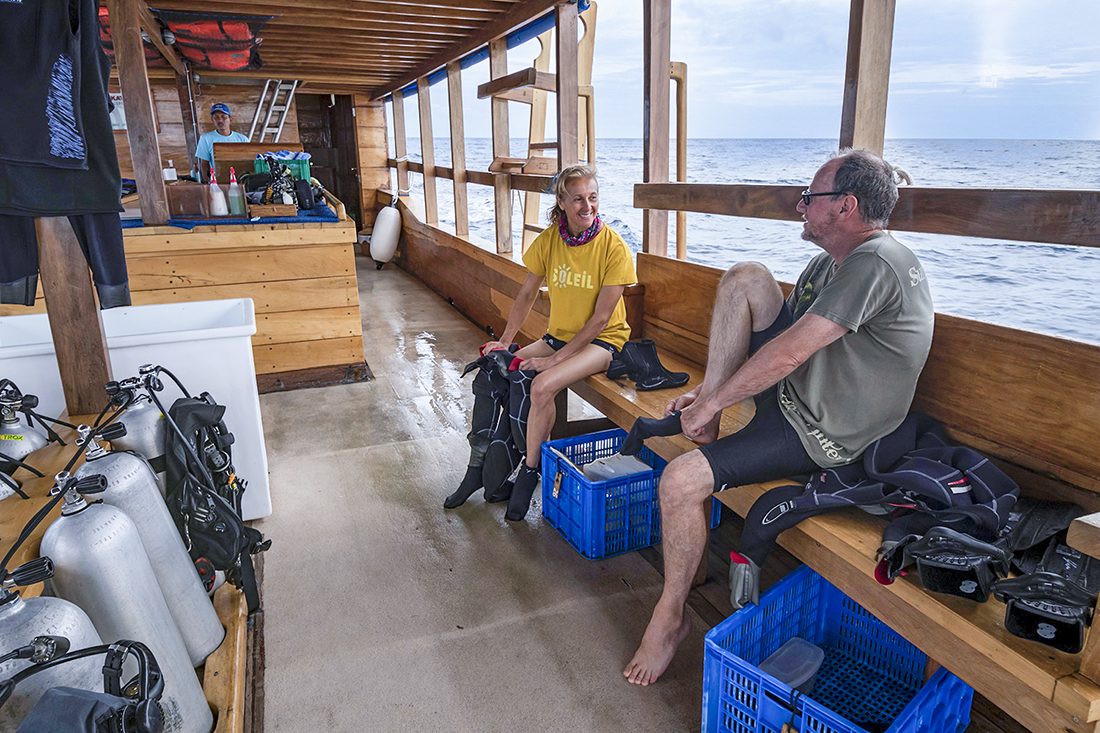
A part of this fleet is reserved for private trips included in Villa packages, and for charter by guests who want to do their diving and snorkeling on their own, with family or a small group of friends. The most extravagant of these is the Wakatobi VII.
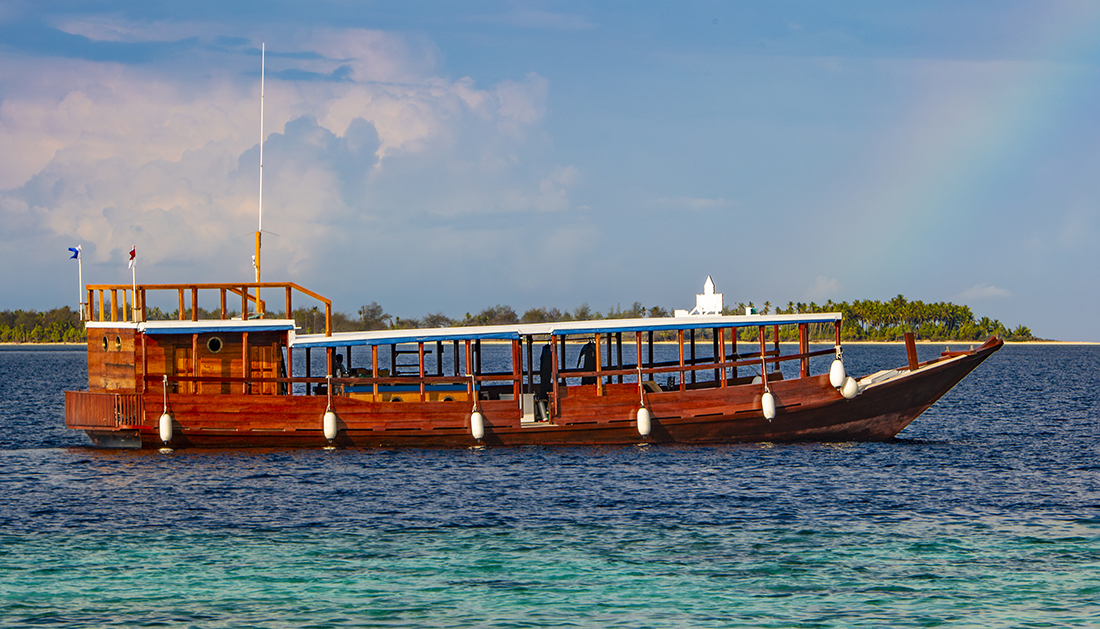
Rather than the full-length bench seating found on the resort’s other boats, the Wakatobi VII’s spacious covered deck includes a shaded dining area, forward sun lounges, a kitchen station, and a changing room with a full bathroom and shower. A special feature is an upper deck, which can be used for sightseeing, sunning, or enjoying dinner under the stars.
A few steps from the water and jetty the longhouse serves as the central hub for all scuba diving and snorkeling endeavors to other activities like kite surfing and stand-up paddle boarding. The dive center within the Longhouse is staffed by a diverse and experienced multi-lingual group of instructors and dive guides. The facility provides a full range of instruction, equipment rental and support services.
Nitrox-certified divers are supplied with 32%, and for the technical crowd there are higher nitrox blends, including pure oxygen, along with helium (on special request) for trimix. For rebreather support the dive center can Molecular brand Sofnolime CO2 absorbent as well as a range of cylinders for O2 and dil.
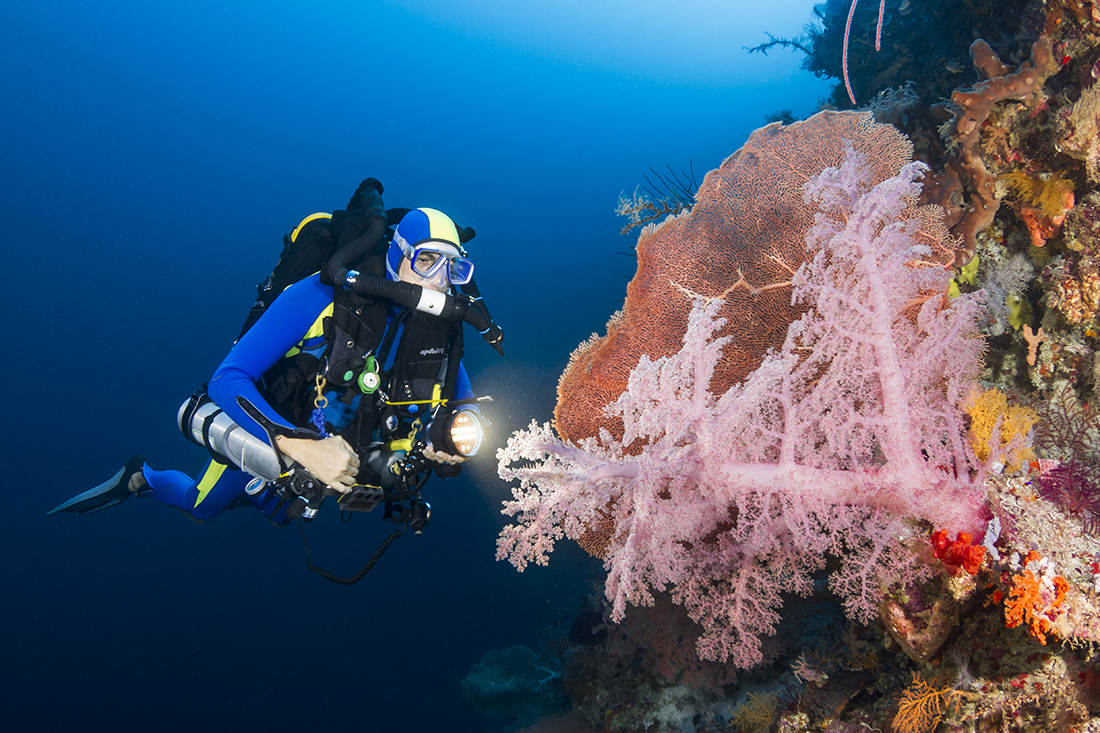
Adjacent to the dive center is the photo center with a large, dedicated rinse tank for photo equipment, a climate-controlled room with ample workbench space and numerous recharging stations in both 220 Volt and 110 Volt.
Time In the Water
Fantastic infrastructure and services aside, one of the big diving hallmarks at Wakatobi is how much time can be spent in the water. On the 53-plus dive sites accessible by the resort’s dive boats, it’s often possible to log dives of 70 minutes in duration. The key to this is the region’s underwater topography.
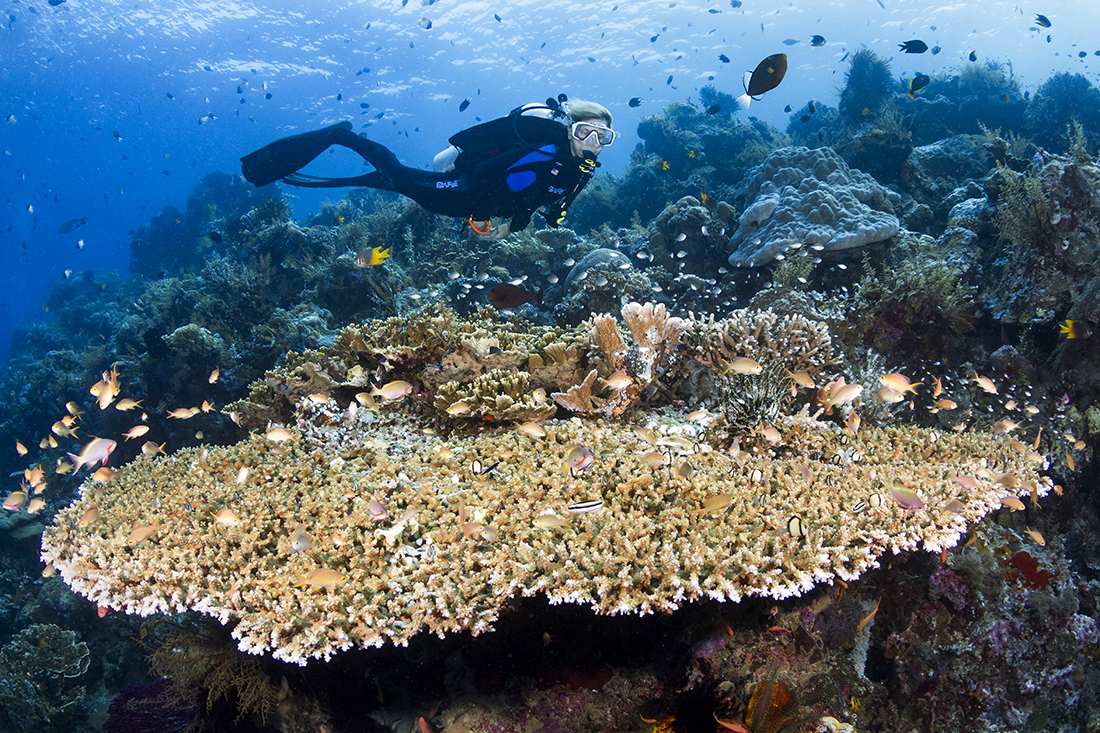
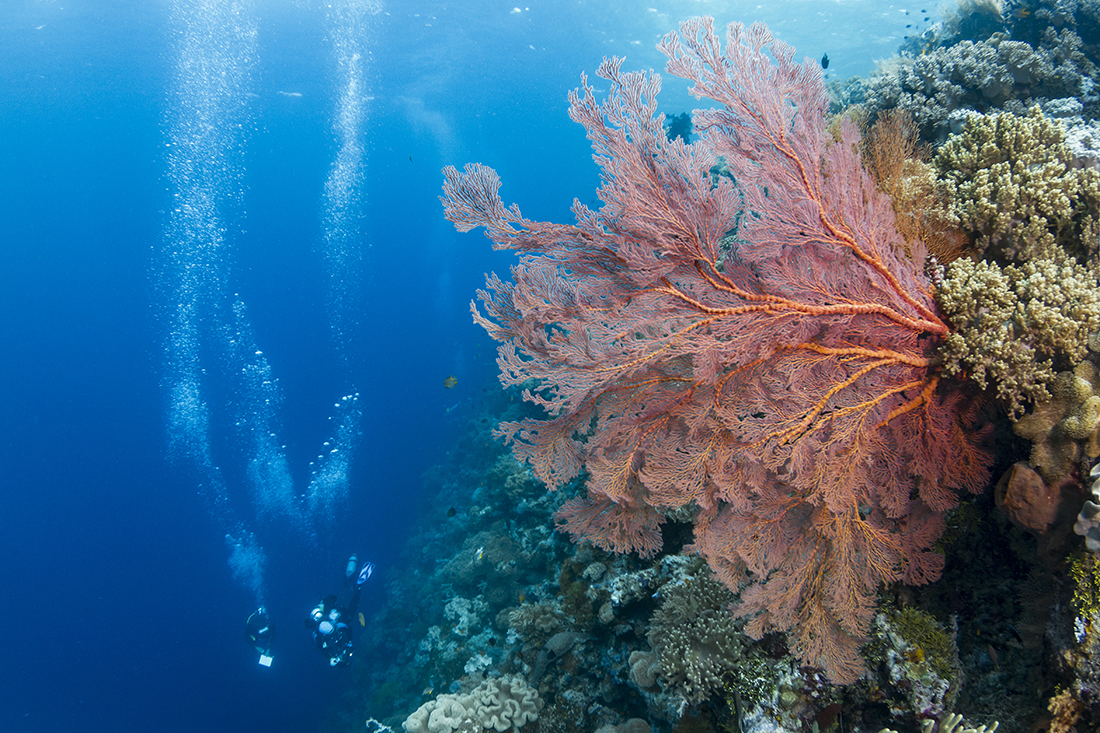
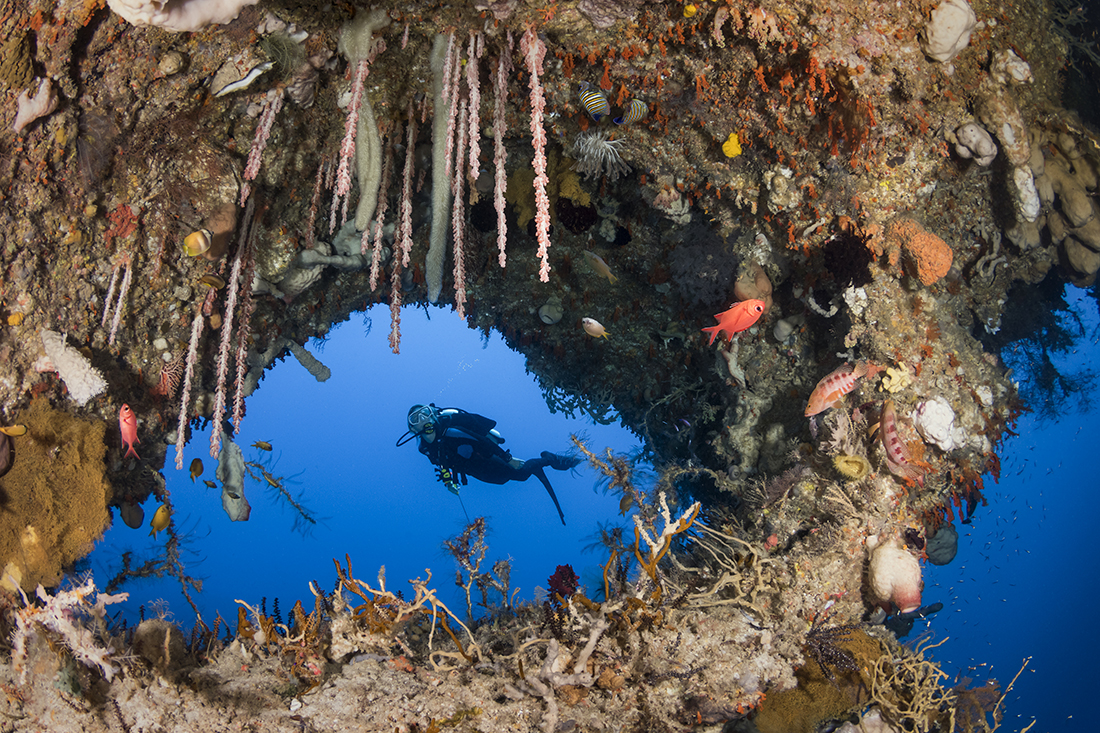
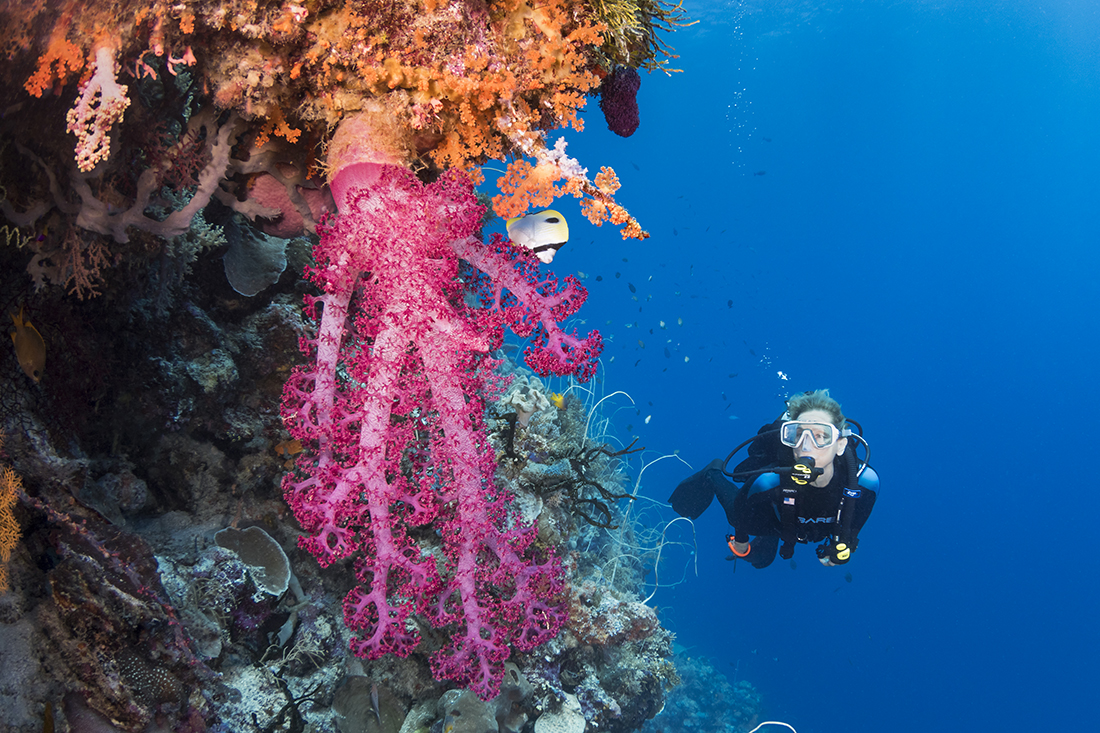
As I described earlier, reef formations start within a few feet of the surface before dropping rapidly down a steep slope or wall into the depths. This allows divers to dial in long multi-level profiles without going anywhere near decompression. Even during a three-minute safety stop at 10 feet, you are still on the reef.
These generous hour-plus bottom times are also made possible by the resort’s boat schedule, which allows ample time for guests to enjoy two dives before lunch. If that is not enough, there’s also an afternoon single boat dive and time to hit the House Reef where the “pool” is open between 6 am and 10 pm every day (fully monitored by staff). As an underwater photographer, I really appreciate that the only limitation to my time underwater is how long the tank lasts. Or the ultimate freedom, Wakatobi also allows solo diving for those both certified and equipped for this practice, and the dive center has pony bottle rigs for rent.
For extended explorations of the House Reef, there is a taxi boat service to take divers to more distant areas of the site. After determining the direction of water flow, the dive team will drop you up current to allow for an easy and exciting drift back to the jetty.
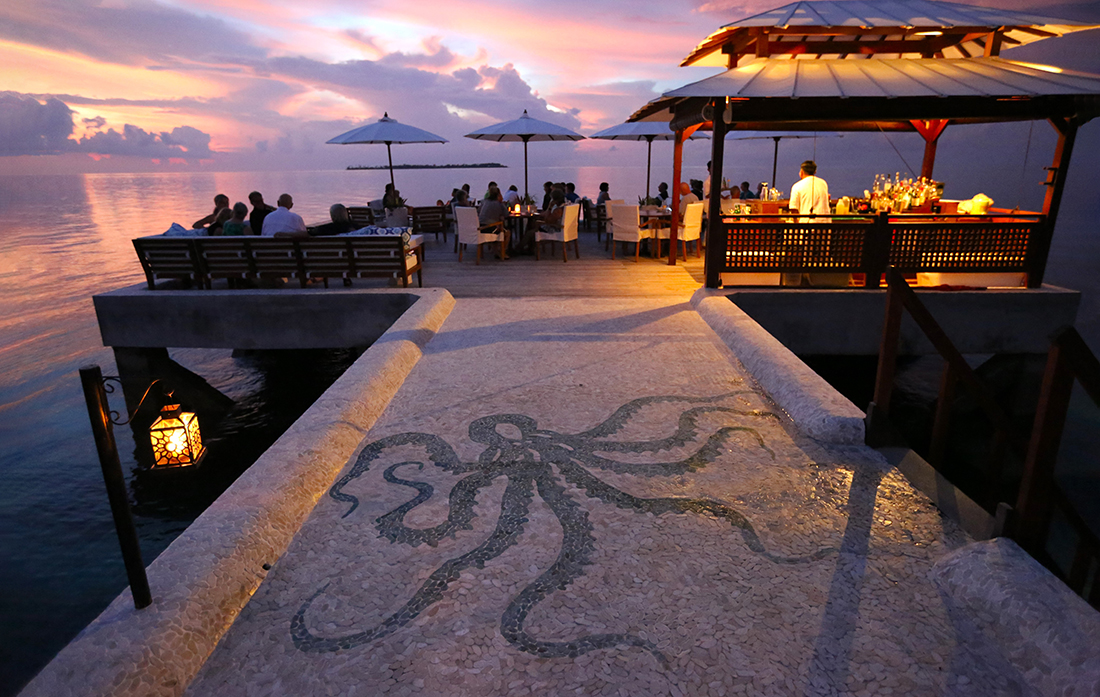
When you add it all up — the idyllic setting, the ease of travel, the great meals and attentive service, the spacious dive boats, the pristine reefs, the marine bio-diversity and the amount of time that can be spent in the water, it’s certainly not a reach to say “Wakatobi delivers.
* * * * *
Disclosure: Wakatobi Dive Resort is a client of Ocean Arts, Inc., which oversees all marketing for this property. As such, while this is a sponsored post, the Underwater Journal remains diligent in how it approaches all content for accuracy when rendering a description of any operation or product to our readership.

